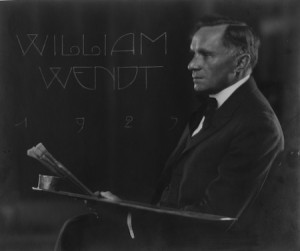Museum’s exhibit on Hollywood portrait photographer George Hurrell taps into local history
By L.F. D’Elia

Florence Leontine Lowe Barnes had money — big money – having been born into one of the wealthiest families in America. In addition to her estate in Pasadena, Florence owned a large home on 40 acres along the Laguna Beach bluffs at what is now known as Smith Cliffs. There she installed the city’s first swimming pool, overlooking the ocean. Her new-found friend, George Hurrell, was a frequent pool-side guest at her home in Laguna. They also made time to sneak off together to go fishing. Whenever they went fishing they would bet who would catch the biggest fish of the day. Florence always set the bet: “Whoever loses has to cook the fish.” Florence was quite competitive and she hated to cook, and so George’s cooking and barbecuing skills greatly improved over the years and became legendary in the community.
By 1927, Florence’s mother had passed away and her marriage to the Pasadena Episcopal minister was not working. She decided to take a trip alone to see the lost city of Machu Pichu in Peru and have time to herself so that she could “just think things through.” Unfortunately, the ship she boarded in San Pedro turned out to be a gun runner for Mexican revolutionaries. So she jumped ship in San Blas, Mexico, and spent the next seven months in adventures in Mexico. When she returned to Pasadena, she had a new nickname: “Pancho.” She was now known as Pancho Barnes – a name, by the way, she kept through three more marriages.

In 1928 Pancho decided that she wanted to learn how to fly an airplane. She had heard that Orville Wright had a reputation for trying to discourage women to fly. Pancho did not like the prospect of rejection merely based on gender, so she decided to play a “fast one” on Orville. Florence Barnes was a gender indeterminate name. Along with the written application – which never inquired as to gender – all applicants had to submit a photo, which was then attached to the license. Pancho remembered that her artist friend and painter, Hurrell, owned a camera. She also had seen some of his photos, and thought they were much better than his paintings. So she asked him to take her picture for her pilot license application. For the application photo she dressed like a man – smoking a cigarette, dirty fingernails and all! Orville signed the application and off she went. She became the first female stunt pilot in Hollywood and the first female test pilot for Lockheed. Many aviation historians say Barnes was one of the most skilled pilots of the Golden Age of Flight.
Anyway, Hurrell felt bad making his good friend Pancho look so awful for the pilot license application, and so he insisted on taking some “nice” photos of her. He took several photos of her at home in Laguna. He made her look beautiful, as she was not your classic beauty at all. Naturally, she loved the photos.

At the time, Pancho’s best friend was Ramon Novarro, then the biggest silent movie star at MGM, the highest paid, and also the most famous movie star in the world. Novarro, who was Mexican, was worried that he might not make the transition to sound film because of his slight accent. However, he had a wonderful operatic voice, and so – to hedge his bets — he decided that he could always reinvent himself as an opera star in Europe. But he needed publicity photos to accomplish this. If word leaked back to MGM that he was nervous about his career, his new salary negotiations could be jeopardized. He could not use any photographers in town.
Pancho suggested Hurrell. She loved the glamorous photos he took of her, and secretly believed that his destiny was in photography. And so Novarro had a series of photographs taken by Hurrell at Barnes’ homes in Pasadena and Laguna. In one, Novarro was standing next to Barnes’ horse. The composition and lighting were amazing. When Barnes saw the photograph, she exclaimed: “If George Hurrell can make my horse look as beautiful as the most handsome man in America, then everyone should be using George Hurrell as their photographer.”
Hurrell’s reputation as the Rembrandt of portrait photography spread quickly throughout the industry, and within a year, practically everyone in Hollywood was seeking Hurrell for his photographic portrait skills. In 1930 he became head portrait photographer for MGM. During his 60-plus year career in photography he worked for almost all the major studios in Hollywood and photographed just about every major Hollywood star.
Although he relocated to Hollywood to be closer to the studios, whenever he could, Hurrell would break away from his duties and visit his friends in Laguna.
Hurrell died in 1992 and exhibitions of his photography continue to be held at major museums all over the world. The Laguna Art Museum currently has a collection of his prints of local artists that he took when he first started his ventures into photography.

As Hurrell noted in a talk at the museum in 1977, “I look back on my early years in Laguna Beach with great fondness, and am thankful to the wonderful artists living here who instilled in me a sense of joy in creating, in dreaming, and in achieving – as they created, and dreamed and achieved.”
This article first appeared in the Indy in 2006, coinciding with a Historical Society presentation on Barnes and Hurrell by Louis F. D’Elia, curator of the Pancho Barnes Trust Estate Archive.




